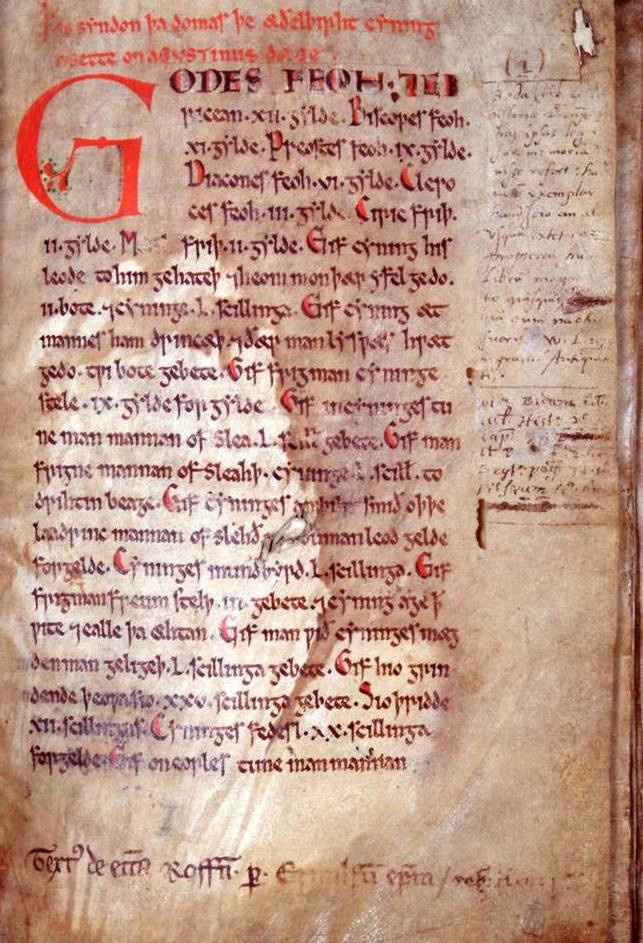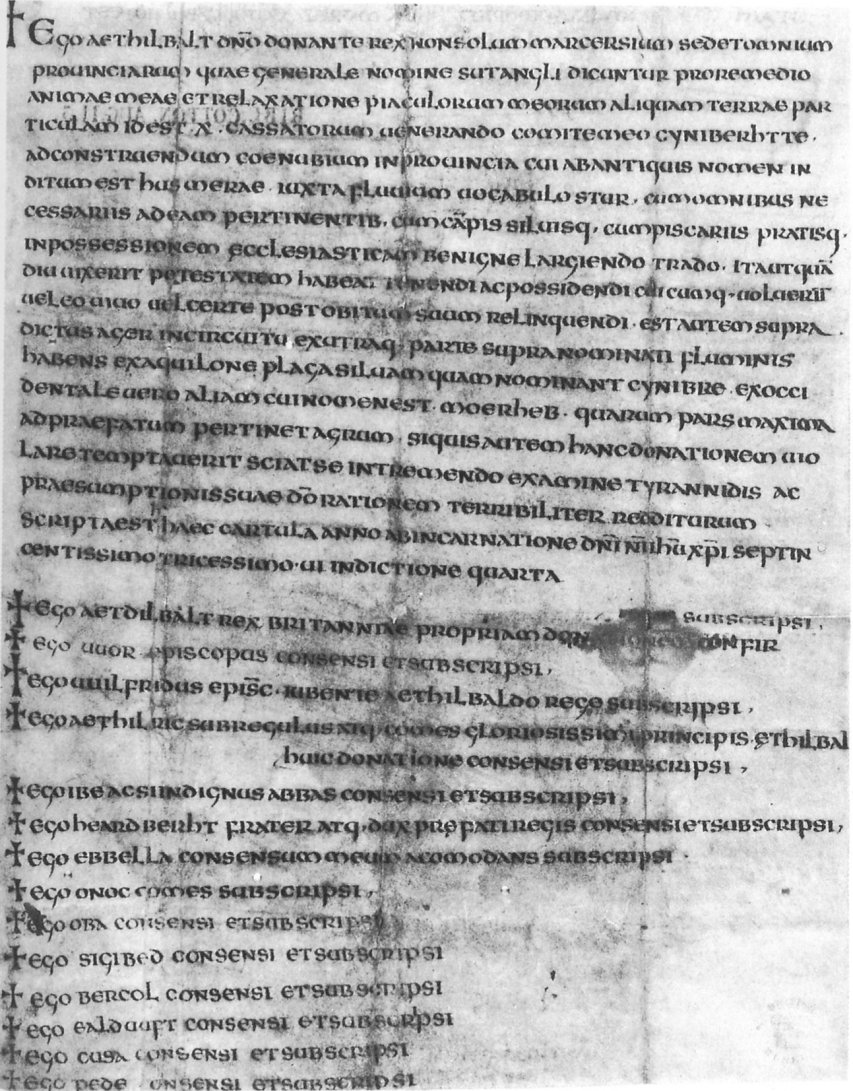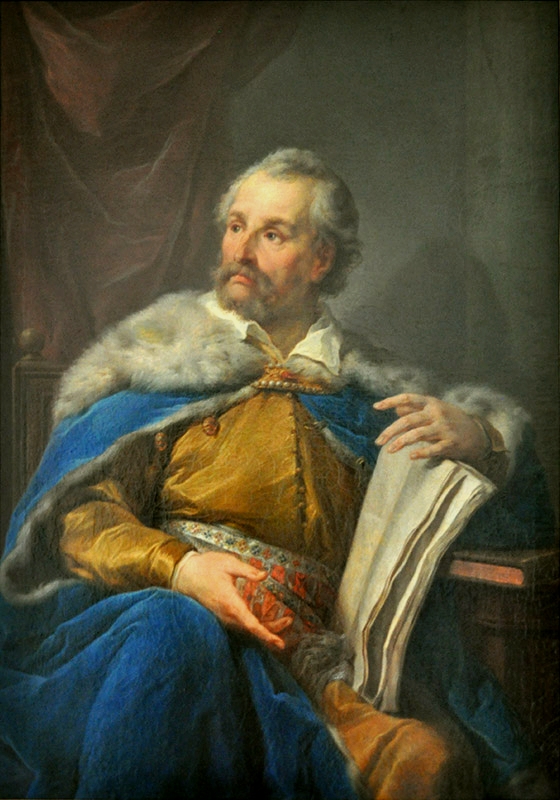|
Magnum Concilium
In the Kingdom of England, the (Latin for "Great Council") was an assembly historically convened at certain times of the year when the English baronage and church leaders were summoned to discuss the affairs of the country with the king. In the 13th century, the Great Council was superseded by the Parliament of England, which had developed out of the council. The Great Council was last summoned by Charles I in 1640. Middle Ages Anglo-Saxon predecessors The origins of the (Latin for "great council") can be traced to the 10th century when a unified Kingdom of England was forged from several smaller kingdoms. In Anglo-Saxon England, the king would hold deliberative assemblies of nobles and prelates called witans. These assemblies numbered anywhere from twenty-five to hundreds of participants, including bishops, abbots, ealdormen, and thegns. Witans met regularly during the three feasts of Christmas, Easter and Whitsun and at other times. In the past, kings interacted wi ... [...More Info...] [...Related Items...] OR: [Wikipedia] [Google] [Baidu] |
Kingdom Of England
The Kingdom of England (, ) was a sovereign state on the island of Great Britain from 12 July 927, when it emerged from various Anglo-Saxon kingdoms, until 1 May 1707, when it united with Scotland to form the Kingdom of Great Britain. On 12 July 927, the various Anglo-Saxon kings swore their allegiance to Æthelstan of Wessex (), unifying most of modern England under a single king. In 1016, the kingdom became part of the North Sea Empire of Cnut the Great, a personal union between England, Denmark and Norway. The Norman conquest of England in 1066 led to the transfer of the English capital city and chief royal residence from the Anglo-Saxon one at Winchester to Westminster, and the City of London quickly established itself as England's largest and principal commercial centre. Histories of the kingdom of England from the Norman conquest of 1066 conventionally distinguish periods named after successive ruling dynasties: Norman (1066–1154), Plantagenet (1154–1485 ... [...More Info...] [...Related Items...] OR: [Wikipedia] [Google] [Baidu] |
Easter
Easter,Traditional names for the feast in English are "Easter Day", as in the '' Book of Common Prayer''; "Easter Sunday", used by James Ussher''The Whole Works of the Most Rev. James Ussher, Volume 4'') and Samuel Pepys''The Diary of Samuel Pepys, Volume 2'') as well as the single word "Easter" in books printed i157515841586 also called Pascha (Aramaic, Greek, Latin) or Resurrection Sunday, is a Christian festival and cultural holiday commemorating the resurrection of Jesus from the dead, described in the New Testament as having occurred on the third day of his burial following his crucifixion by the Romans at Calvary . It is the culmination of the Passion of Jesus Christ, preceded by Lent (or Great Lent), a 40-day period of fasting, prayer, and penance. Easter-observing Christians commonly refer to the week before Easter as Holy Week, which in Western Christianity begins on Palm Sunday (marking the entrance of Jesus in Jerusalem), includes Spy Wednesday (on which t ... [...More Info...] [...Related Items...] OR: [Wikipedia] [Google] [Baidu] |
Familiaris
In the Middle Ages In the history of Europe, the Middle Ages or medieval period lasted approximately from the late 5th to the late 15th centuries, similar to the post-classical period of global history. It began with the fall of the Western Roman Empire ..., a ''familiaris'' (plural ''familiares''), more formally a ''familiaris regis'' ("familiar of the king") or ''familiaris curiae''In medieval documents, ''curiae'' may also be spelled ''curiæ'' or ''curie''. ("of the court"), was, in the words of the historian W. L. Warren, "an intimate, a familiar resident or visitor in the oyalhousehold, a member of the ''familia'', that wider family which embraces servants, confidents, and close associates." Warren adds that the term "defies adequate translation", but is distinct from courtier, "for the king employed his ''familiares'' on a variety of administrative tasks." The ''familiares'' of a king are collectively referred to as the ''familia regis'', which evolved int ... [...More Info...] [...Related Items...] OR: [Wikipedia] [Google] [Baidu] |
Writ
In common law, a writ (Anglo-Saxon ''gewrit'', Latin ''breve'') is a formal written order issued by a body with administrative or judicial jurisdiction; in modern usage, this body is generally a court. Warrants, prerogative writs, subpoenas, and '' certiorari'' are common types of writ, but many forms exist and have existed. In its earliest form, a writ was simply a written order made by the English monarch to a specified person to undertake a specified action; for example, in the feudal era a military summons by the king to one of his tenants-in-chief to appear dressed for battle with retinue at a certain place and time. An early usage survives in the United Kingdom, Canada, and Australia in a writ of election, which is a written order issued on behalf of the monarch (in Canada, by the Governor General and, in Australia, by the Governor-General for elections for the House of Representatives, or State Governors for state elections) to local officials ( High Sheriffs of eve ... [...More Info...] [...Related Items...] OR: [Wikipedia] [Google] [Baidu] |
State Trials
In English law, the term ''state trials'' primarily denotes trials relating to offences against the state. In practice it is a term often used of cases illustrative of the law relating to state officers or of international or constitutional law. Bibliographical history The first collection of accounts of state trials was published in 1719 in four volumes. Although without an editor's name, it appears that Thomas Salmon (1679–1767), an historical and geographical writer, was responsible for the collection. A second edition, increased to six volumes, under the editorship of Sollom Emlyn (1697–1754), appeared in 1730. This edition contained a lengthy preface critically surveying the condition of English law at the time. A third edition appeared in 1742, in eight volumes, the seventh and eighth volumes having been added in 1835. Ninth and tenth volumes were added in 1766, and a fourth edition, comprising ten volumes, with the trials arranged chronologically, was publishe ... [...More Info...] [...Related Items...] OR: [Wikipedia] [Google] [Baidu] |
William The Conqueror
William I; ang, WillelmI (Bates ''William the Conqueror'' p. 33– 9 September 1087), usually known as William the Conqueror and sometimes William the Bastard, was the first Norman king of England The monarchy of the United Kingdom, commonly referred to as the British monarchy, is the constitutional form of government by which a hereditary sovereign reigns as the head of state of the United Kingdom, the Crown Dependencies (the Bailiw ..., reigning from 1066 until his death in 1087. A descendant of Rollo, he was Duke of Normandy from 1035 onward. By 1060, following a long struggle to establish his throne, his hold on Normandy was secure. In 1066, following the death of Edward the Confessor, William invaded England, leading an army of Normans to victory over the Anglo-Saxons, Anglo-Saxon forces of Harold Godwinson at the Battle of Hastings, and suppressed subsequent English revolts in what has become known as the Norman Conquest. The rest of his life was marked by str ... [...More Info...] [...Related Items...] OR: [Wikipedia] [Google] [Baidu] |
Norman Conquest
The Norman Conquest (or the Conquest) was the 11th-century invasion and occupation of England by an army made up of thousands of Norman, Breton, Flemish, and French troops, all led by the Duke of Normandy, later styled William the Conqueror. William's claim to the English throne derived from his familial relationship with the childless Anglo-Saxon king Edward the Confessor, who may have encouraged William's hopes for the throne. Edward died in January 1066 and was succeeded by his brother-in-law Harold Godwinson. The Norwegian king Harald Hardrada invaded northern England in September 1066 and was victorious at the Battle of Fulford on 20 September, but Godwinson's army defeated and killed Hardrada at the Battle of Stamford Bridge on 25 September. Three days later on 28 September, William's invasion force of thousands of men and hundreds of ships landed at Pevensey in Sussex in southern England. Harold marched south to oppose him, leaving a significant portion o ... [...More Info...] [...Related Items...] OR: [Wikipedia] [Google] [Baidu] |
Anglo-Saxon Law
Anglo-Saxon law ( Old English ''ǣ'', later ''lagu'' "law"; dōm "decree, judgment") is a body of written rules and customs that were in place during the Anglo-Saxon period in England, before the Norman conquest. This body of law, along with early Medieval Scandinavian law and Germanic law, descended from a family of ancient Germanic custom and legal thought. However, Anglo-Saxon law codes are distinct from other early Germanic legal statements—known as the ''leges barbarorum'', in part because they were written in Old English instead of in Latin. The laws of the Anglo-Saxons were the second in medieval Western Europe after those of the Irish to be expressed in a language other than Latin. Overview Early Germanic law Inked records of early Germanic law (''leges barbarorum'') were, in many ways, the product of Roman influence. Throughout the early middle ages, as various " Teutonic", or Germanic, tribes on the continent came into closer and more peaceful contact with the h ... [...More Info...] [...Related Items...] OR: [Wikipedia] [Google] [Baidu] |
Bookland (law)
Bookland ( ang, bocland) was a type of land tenure under Anglo-Saxon law and referred to land that was vested by a charter. Land held without a charter was known as ''folkland'' ( ang, folcland). The distinction in meaning between these terms is a consequence of Anglo-Saxon land law. The concept of bookland arose in the seventh century and referred to land that could be 'alienated' (i.e., disposed of) at will. It evolved to resemble ownership in the modern sense. Folkland was land held under ancient, unwritten folk-law or custom and by that custom it could not be alienated (i.e., removed) from the kin of the holder, except under special circumstances. No such claim by the kin could be made on bookland. The definition of those ancient folk-laws and customs, and the definition of the word ''folkland'', has long been the subject of controversy. The model suggested by the historian Patrick Wormald, given in the definition above, allows for the graceful sidestepping of that controver ... [...More Info...] [...Related Items...] OR: [Wikipedia] [Google] [Baidu] |
Patronage
Patronage is the support, encouragement, privilege, or financial aid that an organization or individual bestows on another. In the history of art, arts patronage refers to the support that kings, popes, and the wealthy have provided to artists such as musicians, painters, and sculptors. It can also refer to the right of bestowing offices or church benefices, the business given to a store by a regular customer, and the guardianship of saints. The word "patron" derives from the la, patronus ("patron"), one who gives benefits to his clients (see Patronage in ancient Rome). In some countries the term is used to describe political patronage or patronal politics, which is the use of state resources to reward individuals for their electoral support. Some patronage systems are legal, as in the Canadian tradition of the Prime Minister to appoint senators and the heads of a number of commissions and agencies; in many cases, these appointments go to people who have supported the politic ... [...More Info...] [...Related Items...] OR: [Wikipedia] [Google] [Baidu] |
Magnate
The magnate term, from the late Latin ''magnas'', a great man, itself from Latin ''magnus'', "great", means a man from the higher nobility, a man who belongs to the high office-holders, or a man in a high social position, by birth, wealth or other qualities in Western Christian countries since the medieval period. It also includes the members of the higher clergy, such as bishops, archbishops and cardinals. In reference to the medieval, the term is often used to distinguish higher territorial landowners and warlords, such as counts, earls, dukes, and territorial-princes from the baronage, and in Poland for the richest '' szlachta''. England In England, the magnate class went through a change in the later Middle Ages. It had previously consisted of all tenants-in-chief of the crown, a group of more than a hundred families. The emergence of Parliament led to the establishment of a parliamentary peerage that received personal summons, rarely more than sixty families. A simil ... [...More Info...] [...Related Items...] OR: [Wikipedia] [Google] [Baidu] |






_(31023042187)_CROP.jpg)
